Amount of torque and duration of stretching affects correction of knee contracture in a rat model of spinal cord injury
- PMID: 23893364
- PMCID: PMC3792286
- DOI: 10.1007/s11999-013-3196-z
Amount of torque and duration of stretching affects correction of knee contracture in a rat model of spinal cord injury
Abstract
Background: Joint contractures are a common complication of many neurologic conditions, and stretching often is advocated to prevent and treat these contractures. However, the magnitude and duration of the stretching done in practice usually are guided by subjective clinical impressions.
Questions/purposes: Using an established T8 spinal cord injury rat model of knee contracture, we sought to determine what combination of static or intermittent stretching, varied by magnitude (high or low) and duration (long or short), leads to the best (1) improvement in the limitation in ROM; (2) restoration of the muscular and articular factors leading to contractures; and (3) prevention and treatment of contracture-associated histologic alterations of joint capsule and articular cartilage.
Methods: Using a rat animal model, the spinal cord was transected completely at the level of T8. The rats were randomly assigned to seven treatment groups (n = 4 per group), which were composed of static or intermittent stretching in combination with different amounts of applied torque magnitude and duration. We assessed the effect of stretching by measuring the ROM and evaluating the histologic alteration of the capsule and cartilage.
Results: Contractures improved in all treated groups except for the low-torque and short-duration static stretching conditions. High-torque stretching was effective against shortening of the synovial membrane and adhesions in the posterosuperior regions. Collagen Type II and VEGF in the cartilage were increased by stretching.
Conclusions: High-torque and long-duration static stretching led to greater restoration of ROM than the other torque and duration treatment groups. Stretching was more effective in improving articular components of contractures compared with the muscular components. Stretching in this rat model prevented shortening and adhesion of the joint capsule, and affected biochemical composition, but did not change morphologic features of the cartilage.
Clinical relevance: This animal study tends to support the ideas that static stretching can influence joint ROM and histologic qualities of joint tissues, and that the way stretching is performed influences its efficacy. However, further studies are warranted to determine if our findings are clinically applicable.
Figures
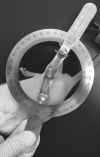

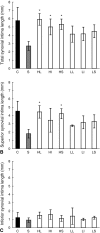
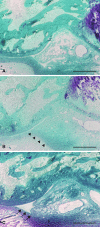
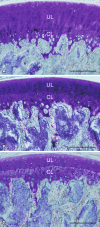
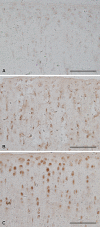
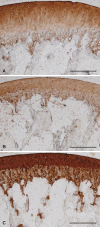
Similar articles
-
Transcutaneous Carbon Dioxide Improves Contractures After Spinal Cord Injury in Rats.Clin Orthop Relat Res. 2019 Aug;477(8):1934-1946. doi: 10.1097/CORR.0000000000000808. Clin Orthop Relat Res. 2019. PMID: 31135536 Free PMC article.
-
Stretching After Heat But Not After Cold Decreases Contractures After Spinal Cord Injury in Rats.Clin Orthop Relat Res. 2016 Dec;474(12):2692-2701. doi: 10.1007/s11999-016-5030-x. Epub 2016 Aug 16. Clin Orthop Relat Res. 2016. PMID: 27530397 Free PMC article.
-
[The Therapeutic Effect and Mechanism of Static Progressive Stretching in Different Durations on Traumatic Knee Contracture in Rats].Sichuan Da Xue Xue Bao Yi Xue Ban. 2020 Mar;51(2):185-192. doi: 10.12182/20200360204. Sichuan Da Xue Xue Bao Yi Xue Ban. 2020. PMID: 32220186 Chinese.
-
Effect of chronic stretching interventions on the mechanical properties of muscles in patients with stroke: A systematic review.Ann Phys Rehabil Med. 2020 May;63(3):222-229. doi: 10.1016/j.rehab.2019.12.003. Epub 2020 Jan 22. Ann Phys Rehabil Med. 2020. PMID: 31981838
-
The Effectiveness of PNF Versus Static Stretching on Increasing Hip-Flexion Range of Motion.J Sport Rehabil. 2018 May 1;27(3):289-294. doi: 10.1123/jsr.2016-0098. Epub 2018 May 22. J Sport Rehabil. 2018. PMID: 28182516 Review.
Cited by
-
Exceptional improvement in chronic stroke through Guided Self-rehabilitation Contract: a case report study.Front Rehabil Sci. 2024 Sep 18;5:1385483. doi: 10.3389/fresc.2024.1385483. eCollection 2024. Front Rehabil Sci. 2024. PMID: 39363991 Free PMC article.
-
Transcutaneous Carbon Dioxide Improves Contractures After Spinal Cord Injury in Rats.Clin Orthop Relat Res. 2019 Aug;477(8):1934-1946. doi: 10.1097/CORR.0000000000000808. Clin Orthop Relat Res. 2019. PMID: 31135536 Free PMC article.
-
Functional stretching exercise submitted for spastic diplegic children: a randomized control study.Rehabil Res Pract. 2014;2014:814279. doi: 10.1155/2014/814279. Epub 2014 Jul 20. Rehabil Res Pract. 2014. PMID: 25143834 Free PMC article.
-
Effect of traction therapy on muscle satellite cell proliferation and differentiation in a rat model of knee stiffness.Stem Cell Res Ther. 2024 Dec 20;15(1):490. doi: 10.1186/s13287-024-04108-1. Stem Cell Res Ther. 2024. PMID: 39707518 Free PMC article.
-
Regenerative and Rehabilitative Medicine: A Necessary Synergy for Functional Recovery from Volumetric Muscle Loss Injury.Cells Tissues Organs. 2016;202(3-4):237-249. doi: 10.1159/000444673. Epub 2016 Nov 9. Cells Tissues Organs. 2016. PMID: 27825146 Free PMC article. Review.
References
-
- Enneking WF, Horowitz M. The intra-articular effects of immobilization on the human knee. J Bone Joint Surg Am. 1972;54:973–985. - PubMed
Publication types
MeSH terms
Substances
LinkOut - more resources
Full Text Sources
Other Literature Sources
Medical

